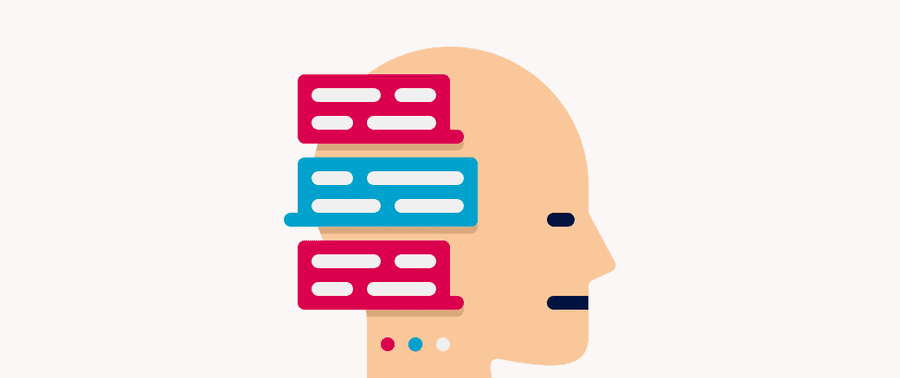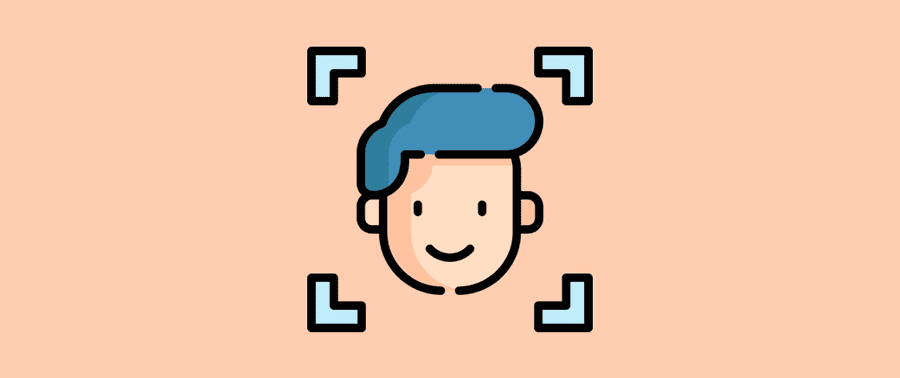40 Common Vietnamese Verbs That You Must Know (Part 1)
Acquiring vocabulary is a high priority for any language learner. The best place to start is to learn the most common words used by native speakers, especially Vietnamese VERBS.
Verbs are words that we used to talk about actions. They are a very important part to construct complete sentences, even simple ones.
The good news is, unlike many other languages, Vietnamese verbs are not conjugated. That means the verb forms stay the same regardless of the pronouns and tenses. For instance:
- I eat → Mình ăn
- He eats → Ảnh ăn
- She ate → Cổ (đã) ăn
This lesson will introduce you to the most common and basic Vietnamese verbs, with example sentences that you can use in daily conversation.
After learning this list, you can also go to part 2 of this lesson to learn more common Verbs.
LÀ
Meaning: to be
The word “là” is equivalent to “to be” verb in English, which also includes am/is/are/was/were.
But unlike English, Vietnamese “là” is mostly used to introduce something or someone's identity or profession. For example:
- Ảnh là giáo viên.
He is a teacher.
where "giáo viên" means teacher
- Họ là người Mỹ
They are Americans
where "người Mỹ" refers to American person or American people
When you want to describe someone or something like “she’s beautiful” or “phở is tasty”, you don’t have to use the word "là". For instance:
Cổ đẹp
She’s beautiful
Phở ngon
Phở is tasty
Ở
Meaning: to be in/at a location, or to stay
Ở is used when talking about being in/at a location. For example:
Mình ở Việt Nam
I am in Vietnam / I stay in VietnamMình ở nhà
I am at home / I stay (at) home
where "nhà" means home or house
CÓ
Meaning: to have
You probably know that The word “Có” also means “yes”, but as a verb, it means “to have”. For example:
- Mình có hai anh chị em
I have 2 siblings
where “anh chị em” means siblings or brothers and sisters
THÍCH
Meaning: to like
- Ảnh không thích đồ ngọt
He doesn’t like sweet stuff
where “ngọt” means sweet, and “đồ” refers to stuff in general
LÀM
Meaning: to do, to make, or to work
The word “làm” has many meanings, but I’ll show you the most common ones. The first meaning of “làm” is “To do”
Bạn đang làm gì?
“What are you doing?” (literally “You are doing what?”)
The second meaning of “làm” is To make
- Cổ làm đồ ăn cho ảnh
She makes food for him
where “đồ ăn” means food, “cho ảnh” means for him
Another meaning of “làm” is to work. The word to work in Vietnamese, can either be “làm” or “làm việc". For example:
Bạn làm ở đâu?
You work where? / Where do you work?Mình làm việc với John
I work with John
BIẾT
Meaning: to know
- Mình không biết chỗ đó
I don’t know that place
where “chỗ” refers to a place in general, “chỗ đó” means that place
NÓI
Meaning: to speak or to say
- Mình biết nói một chút tiếng Việt
I know how to speak a little Vietnamese
where “tiếng Việt” refers to the Vietnamese language, and “một chút” means a little, a bit
Vietnamese Numbers: The Ultimate Free GuideNGHE
Meaning: to hear, to listen
- Mình không nghe rõ
I didn’t hear clearly
where “rõ” means clear or clearly
HIỂU
Meaning: to understand
- Mình không hiểu bạn nói gì
I don’t understand what you say (literally "I don't understand you say what")
ĐI
Meaning: to go
- Tuần sau mình đi Sapa
Next week I’ll go to Sapa
where "tuần" means week, “tuần sau” means next week
ĂN
Meaning: to eat
- Mình không ăn được cay
I can’t eat spicy things
Note: The word “được” is used to talk about being able to do something. So “ăn được” means can eat or able to eat, “không ăn được” means cannot eat or not able to eat
The word “cay” refers to something spicy.
How to say Colors in Vietnamese - with Video and ExamplesUỐNG
Meaning: to drink
- Ảnh không thích uống rượu
He doesn’t like drinking wine
LẤY
Meaning: to take or to get
- Mình lấy cái này
I’ll to take this one / I’ll get this one
where “cái này” means this one
So the verb “Lấy” means “to take”, then we have “lấy cho”, which translates to “to take for someone something” or “to get someone something”. For example:
- Lấy cho mình cái ghế
Get me a chair
NGHĨ
Meaning: to think
- Mình nghĩ trời sắp mưa
I think it’s about to rain
The word “mưa” refers to the “rain” or “to rain”. The phrase “trời mưa” means “it rains”, so “trời sắp mưa” would be “it’s about to rain”.
“Sắp” refers to something that is about to happen.
TỚI or ĐẾN
Meaning: to come to, to arrive
The words “Tới” and “đến” have the same meanings, and they can be used interchangeably.
- Ảnh sẽ tới Việt Nam vào tháng một
He will come to Vietnam in January
where “tháng một” means “January”, and “vào tháng một” means “in January”.
The word “sẽ” is a tense marker that we place before a verb, to describe a future action if the context is not clear enough.
NGHĨ
Meaning: to think
- Mình nghĩ cái đó hơi xấu
I think that one is a bit ugly
where "xấu" means "ugly", and "hơi xấu" means "a bit ugly" or "slightly ugly"
MUỐN
Meaning: to want
- Mình không muốn nghĩ tới nó
I don't want to think about it
To say "to think of" or "to think about" something, you can say "nghĩ tới" or "nghĩ đến".
MUA
Meaning: to buy
- Cổ thích mua quần áo giảm giá
She likes to buy discounted clothes
"quần áo" means "clothes".
"giảm giá" can be a verb "to reduce the price". In this sentence, it is an adjective which refers to "discounted price" or "reduced price".
BÁN
Meaning: to sell
- Cửa hàng này bán mắc!
This store sells expensive
where "cửa hàng" refers to a store or a shop, and “mắc” means “expensive".
In Northern dialect, people would use the word “đắt” instead of "mắc" for saying “expensive”
40 Common Vietnamese Verbs That You Must Know (Part 2)DÙNG
Meanings: to use, to take food/drink/medicine
The first meaning of dùng is “to use”
- Cái này dùng để làm gì?
This one is used to do what? / What is this for?
where “để làm gì?” literally means “to do what?” or simply “what for?”
The second meaning of “dùng” is “to take” as in taking food, drink or medicine
- Anh dùng trà hay là cà phê?
You take tea or coffee?
CHO
Meanings: to give, to let and to put
Here’s an example of “to give”
- Ảnh cho cổ hai vé xem phim
He gave her two movie tickets
where “vé xem phim” means “movie ticket”
The second meaning of “cho” is “to let”
- Tại sao bạn không cho mình biết?
Why you didn’t let me know?
where “tại sao” means “why”
Then we have the third meaning of “cho” which is “to put”. You can also say cho something vào, which means “to put something in”
- Cổ không thích cho đường vào cà phê
She doesn't like to put sugar in the coffee
where “đường” means “sugar”, so “cho đường vào” means “to put sugar in”.
HỎI
Meaning: to ask, to inquire
- Em hỏi ý kiến của sếp chưa?
Have you asked the boss’s opinion?
“hỏi ý kiến” means “to ask someone’s opinion"
“sếp” refers to a “boss” or a “superior”
NHÌN
Meaning: to look at
- Cổ nhìn ảnh và không nói gì
She looks at him and doesn’t say anything
When “gì” is used with a negative form of a verb, it would have the meaning of “anything”. For example:
- không nói gì - to not say anything
- không hiểu gì - to not understand anything
THẤY
This is a powerful verb to know because it has three common meanings: to see, to feel, and to find.
The first meaning of “thấy” is “to see”.
Earlier, we’ve learned that the word nhìn means “to look at”. Now we have the word thấy or nhìn thấy both mean “to see something with your eyes”. For example:
- Hôm qua mình thấy siêu thị có khuyến mãi
Yesterday I saw the supermarket has promotions
where “siêu thị” refers to “supermarket”, and "khuyến mãi” refers to the “sales promotion”
The second meaning of “thấy” is “to feel”. You can either say thấy or cảm thấy. For example:
- Sáng nay mình thấy hơi mệt
This morning I feel a bit tired
where “sáng nay” means “this morning”, and “mệt” means “tired” or “tiring”
The third meaning of “thấy” is “to find” in terms of thinking or feeling a particular way, about someone or something.
- Mình thấy ảnh là một người thích khoe khoang
I find him to be a person who likes to brag
where “khoe khoang” means “to brag” or “to boast”
COI
Meanings: to watch, to view something attentively
The first meaning of "coi" is "to watch something" or “to watch someone doing something”, such as:
- coi ti vi - to watch the TV
- coi ảnh nhảy - to watch him dance
The second meaning of “coi” is “to bring your eyes and your attention on something”. For example:
coi điện thoại
can be translated as “to view/look at something on the phone”coi tin tức - to view the news
which can be on the TV, or in the news’paper
Another word for “coi” that you may know is “xem”. Although "coi" seems to be used more often in the Southern dialect, while "xem" is used more often in the Northern dialect.
How to say different Face Parts in VietnameseCommon Vietnamese Verbs List
- LÀ - to be (am/is/are/was)
- Ở - to be in/at a location; to stay
- CÓ - to have
- THÍCH - to like
- LÀM - to do, to make, to work
- BIẾT - to know
- NÓI - to speak, to say
- NGHE - to listen, to hear
- HIỂU - to understand
- ĐI - to go
- ĂN - to eat
- UỐNG - to drink
- LẤY - to take, to get / LẤY CHO - to get someone something
- NGHĨ - to think
- TỚI / ĐẾN - to come to, to arrive to
- NGHĨ - to think
- MUỐN - to want
- MUA - to buy
- BÁN - to sell
- DÙNG - to use; to take food/drink/medicine
- CHO - to give; to let / CHO VÀO - to put something in
- HỎI - to ask
- NHÌN - to look at
- THẤY - to see; to feel; to find
- COI / XEM - to watch; to view
Be the first to know
Join our Newsletter to receive monthly learning tips and updates!






